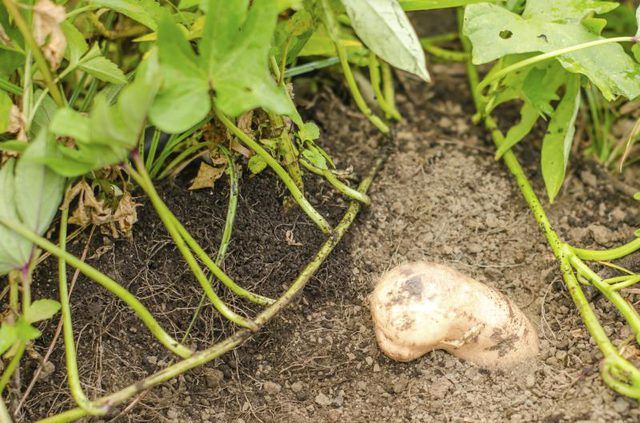Bulbs
Flower Basics
Flower Beds & Specialty Gardens
Flower Garden
Garden Furniture
Garden Gnomes
Garden Seeds
Garden Sheds
Garden Statues
Garden Tools & Supplies
Gardening Basics
Green & Organic
Groundcovers & Vines
Growing Annuals
Growing Basil
Growing Beans
Growing Berries
Growing Blueberries
Growing Cactus
Growing Corn
Growing Cotton
Growing Edibles
Growing Flowers
Growing Garlic
Growing Grapes
Growing Grass
Growing Herbs
Growing Jasmine
Growing Mint
Growing Mushrooms
Orchids
Growing Peanuts
Growing Perennials
Growing Plants
Growing Rosemary
Growing Roses
Growing Strawberries
Growing Sunflowers
Growing Thyme
Growing Tomatoes
Growing Tulips
Growing Vegetables
Herb Basics
Herb Garden
Indoor Growing
Landscaping Basics
Landscaping Patios
Landscaping Plants
Landscaping Shrubs
Landscaping Trees
Landscaping Walks & Pathways
Lawn Basics
Lawn Maintenance
Lawn Mowers
Lawn Ornaments
Lawn Planting
Lawn Tools
Outdoor Growing
Overall Landscape Planning
Pests, Weeds & Problems
Plant Basics
Rock Garden
Rose Garden
Shrubs
Soil
Specialty Gardens
Trees
Vegetable Garden
Yard Maintenance
Is a Sweet Potato Vine Toxic?
Is a Sweet Potato Vine Toxic?. Although most gardeners are familiar with annual sweet potato vines (Ipomoea batatas) for their edible, smoky-sweet orange tubers, the ornamental sweet potato vine puts its energy into fountains of deeply lobed or heart-shaped, spring-to-fall leaves. The vines, ranging from neon-chartreuse and warm burgundy to nearly...

Although most gardeners are familiar with annual sweet potato vines (Ipomoea batatas) for their edible, smoky-sweet orange tubers, the ornamental sweet potato vine puts its energy into fountains of deeply lobed or heart-shaped, spring-to-fall leaves. The vines, ranging from neon-chartreuse and warm burgundy to nearly black, grow as groundcovers, cascade from window boxes, hanging baskets or urns or trail over garden walls. Their attention-grabbing ornamental features, however, come with a price: seeds toxic to people, dogs and cats.
Poison Seeds
Like annual "Heavenly Blue" morning glories (Ipomoea tricolor "Heavenly Blue") and other members of the Morning Glory (Convolvulaceae) family, ornamental sweet potato vines that flower produce seeds laced with the toxic indole LSD. Most cultivars don't flower, but the ones that do boast lavender or pale-pink trumpet flowers in late summer and early fall. None of them requires seeds to reproduce; the tubers remain in the ground through the winter and send up new shoots each spring in U.S. Department of Agriculture plant hardiness zones 9 through 11. Elsewhere, they're lifted and stored in fall for replanting in spring.
Reducing the Risks
If an ornamental sweet potato's flowers are pollinated, round seed pods form at the bases of the stems where the flowers were attached. The pods shrivel and dry as they age, and the seeds inside ripen. Gardeners concerned about potential poisoning can simply remove the seed pods as soon as they appear and dispose of them where they won't pose a danger to kids or pets.
Signs of Poisoning
Visual and tactile hallucinations are the primary symptoms of eating sweet potato vine seeds, according to the Canadian Biodiversity Information Facility. They affect animals as well as people. Other symptoms in people include facial flushing, dilated pupils, lowered blood pressure and diarrhea, numbness of the hands or feet, vomiting and drowsiness. Dogs and cats may also develop diarrhea.
Treating a Poisoned Person
If you suspect a person or pet has eaten ornamental sweet potato vine seeds, remove all plant material from and rinse their mouth and hands or paws with water. Wash their hands or paws and mouth, checking for signs of irritation. Even if they show no symptoms, call your local poison control center or pet poison hotline for instructions on the next steps to take. The California Poison Control System recommends giving providing a few sips of water to drink but cautions not to force vomiting. If your local authority tells you to go to the hospital or veterinary clinic, bring some seeds with you.
Pets and Induced Vomiting
The Pet Poison Helpline warns that there is no safe way to induce vomiting in a cat at home. Salt used to induce vomiting may imbalance a dog's electrolytes or make its brain swell. Feeding the dog mineral oil, butter or grease to speed poison's journey through its digestive tract may cause vomiting violent enough to dehydrate the animal. Finally, cats or dogs inhaling vomit into their lungs frequently contract pneumonia.